Oh Italian Bread, how you have such a bad name in America. (sigh) Sitting there on the store bakers shelf all pre-made and inflated. Oh how we thought you were the best. "How would I ever get mine that airy, light, and BIG!?" we asked ourselves. We almost did not try...BUT THEN...we pulled out our biga, pulled up our socks (my pants are fine thank you very much!) and got to work and that's when we discovered that the store bread...well, frankly, IT SUCKS! After we finished and tasted the end product we found character in the bread we didn't know could exist. We found depths of flavor unexplored prior to now! "But how does it hold up to the dreaded, overused, GARLIC POWDER?!?!" Well, for my money it was the best dang garlic bread I've ever tasted!
...but as my childhood hero Lavar Burton used to say: "Don't take my word for it!"
This is a wonderful use of our biga from the other day. The biga gives a wonderful rustic flavor to the bread and makes it taste like you bought it at a master artisan baker's store! (Be sure to brag about your ability to bake this kind of bread often - you've earned it!)
(From none other that the master himself Peter Reinhart's The Bread Bakers Apprentice)
Makes two 1-pound loaves or 9 torpedo (hoagie) rolls:
Ingredients:
3 1/2 cups (18 ounces) biga
2 1/2 cups (11.25 ounces) unbleached bread flour
1 2/3 (.41 ounce) salt
1 tablespoon (.5 ounce) sugar
1 teaspoon (.11 ounce) instant yeast
1 teaspoon (.17 ounce) diastatic barley malt powder (optional)
1 tablespoon (.5 ounce) olive oil, vegetable oil, or shortening
3/4 cup to 3/4 cup plus 2 tablespoons (7 to 8 ounces) water (or milk if making torpedo rolls), lukewarm (90 to 100 degrees F)
Lewis note: if you do use milk in the recipe it would be a "Pane de leche" or literally Milk Bread.
Semolina flour or cornmeal for dusting
Instructions:
1. Remove the biga from the refrigerator 1 hour before making the dough. Cut it into about 10 small pieces with a pastry scraper or serrated knife. Cover with a towel or plastic wrap and let sit for 1 hour to take off the chill.
2. Stir together the flour, salt, yeast, and malt powder (if used) in a 4-quart bowl (or in the bowl of an electric mixer). Add the biga pieces, olive oil, and 3/4 cup water and stir together (or mix on low speed with the paddle attachment) until a ball forms, adjusting the water or flour according to need. The dough should be slightly sticky and soft, but not batter like or very sticky. If the dough feels tough and stiff, add more water to soften (it is better to have the dough too soft than too stiff at this point).
3. Sprinkle flour on the counter, transfer the dough to the counter and begin kneading (or mixing on medium speed with the dough hook). Knead (or mix) for about 10 minutes, adding flour as needed, until the dough is tacky, but not sticky, and supple. The dough should register 77 to 81 degrees F inside. Lightly oil a large bowl and transfer the dough to the bowl, rolling it to coat it with the oil. Cover the bowl with plastic wrap.
4. Ferment at room temperature for approximately 2 hours, or until the dough doubles in size.
5. Gently divide the dough into 2 equal pieces of about 18 ounces each, or into 9 pieces of about 4 ounces each (for torpedo rolls). Carefully form the pieces into batards, or rolls, degassing the dough as little as possible. Lightly dust with a sprinkle of flour, cover with a towel or plastic wrap, and let rest for 5 minutes. Then complete the shaping, extending the loaves to about 12 inches in length or shaping the torpedo rolls. Line a sheet pan with baking parchment and dust with semolina flour or cornmeal. Place the loaves on the pan and lightly mist with spray oil. Cover loosely with plastic wrap.
6. Proof at room temperature for about 1 hour, or until the loaves or rolls have grown to about 1 1/2 times their original size.
7. Put an empty pan in the bottom of the oven and preheat to 500 degrees F. Score the breads with 2 parallel, diagonal slashes or 1 long slash.
8. Rolls can be baked directly on the sheet pan. For loaves, generously dust a peel or the bake of a sheet pan with semolina flour cornmeal and very gently transfer the loaves to the peel or pan. Transfer the dough to the baking stone (or bake on the sheet pan). Pour 1 cup hot water into the steam pan and close the door. After 30 seconds, spray the walls of the oven with water and close the door. Repeat once more after another 30 seconds. After the final spray lower the oven setting to 450F (or 400F if and cook it longer if you want a crunchier crust) and bake until done, rotating 180 degrees, if necessary, for even baking. It should take about 20 minutes for loaves and 15 minutes for rolls. The loaves and rolls should be golden brown and register at least 200 degrees F at the center.
9. Transfer the rolls or loaves to a cooling rack and cool for at least 1 hour before slicing or serving.
Sorry about the darkness of the photos. I was night baking without a light :) I hope you do try this bread out at home. It is definitely an easy way to look like a master artisan baker :) The crust and crumb were perfect for spreads and cheeses. As I've stated before I'm more of a cheese man myself but you can see the lovely Mrs. T and the children have an obvious winner.
Have you used a biga before? Did you enjoy the experience? If you've been overly intimidated by what may be perceived as advanced, will you try now?
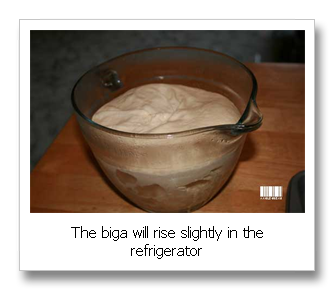





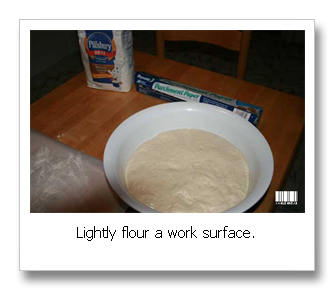

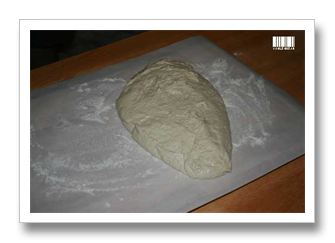
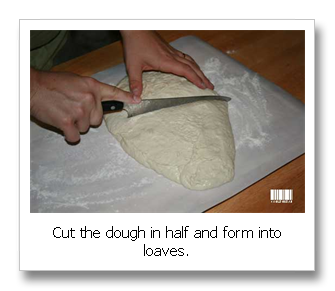


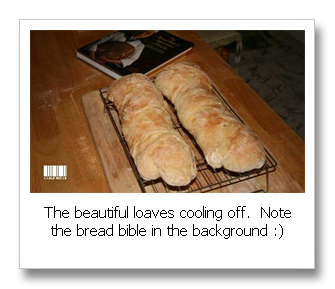
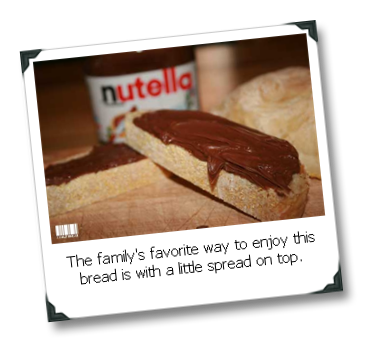











9 comments:
And that my friend is why I always have 2 jars of Nutella at all times on hand. I haven't met a loaf of Italian or biga made bread that didn't get along with the Nutella...
I have never really had the interest to make bread, but reading your posts, makes me want to!!
breadchick - Neither have I :)
april - Thank you so much for such a wonderful compliment! The best gift you can give yourself or your family is a loaf of bread with four ingredients and not 15!
Okay....... I'll admit it. I have never used a "biga".... BUT.... I will... and soon. Just not this week...
You were my inspiration to try making bread in the first place Lewis....so....I'm definitely going to follow further....
Bumblevee - careful...no one knows how far down the rabbit hole goes :) Stay tuned because I've got something special you will love coming up. Something simple but beautiful. I think you will really enjoy making this bread.
I love those descriptive pictures! Wow! :)
Sugar Betty - Thanks for the compliment! :)
I live in Sri Lanka... its been so hard to come across a decent recipe for Italian bread that actually works with low quality flour you get here... but this recipe works great! Thanks for this....awesome tasting, crunchy and airy bread!! :)
Shaping's a curse though!!!
4212
I have used biga's and they made me look like a genius bread baker. It is a little more time consuming, but impresses so much more than a loaf from my bread machine:) Totally worth the effort. The flavor-OMG.
I've also used a poolish(similar) and had great results, but my favorite was the biga. I am now working on a 'real' sourdough. Wish me luck
Post a Comment